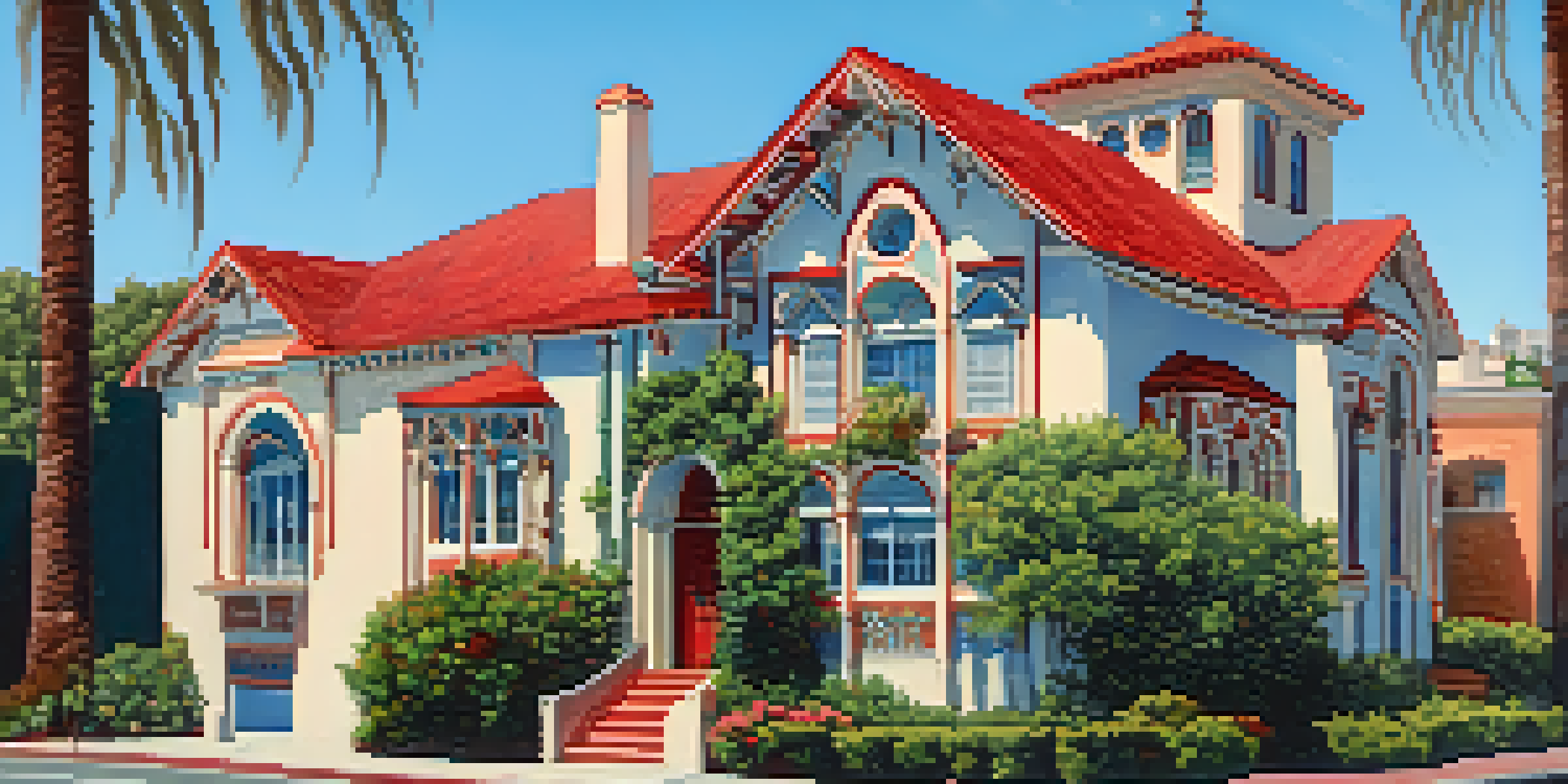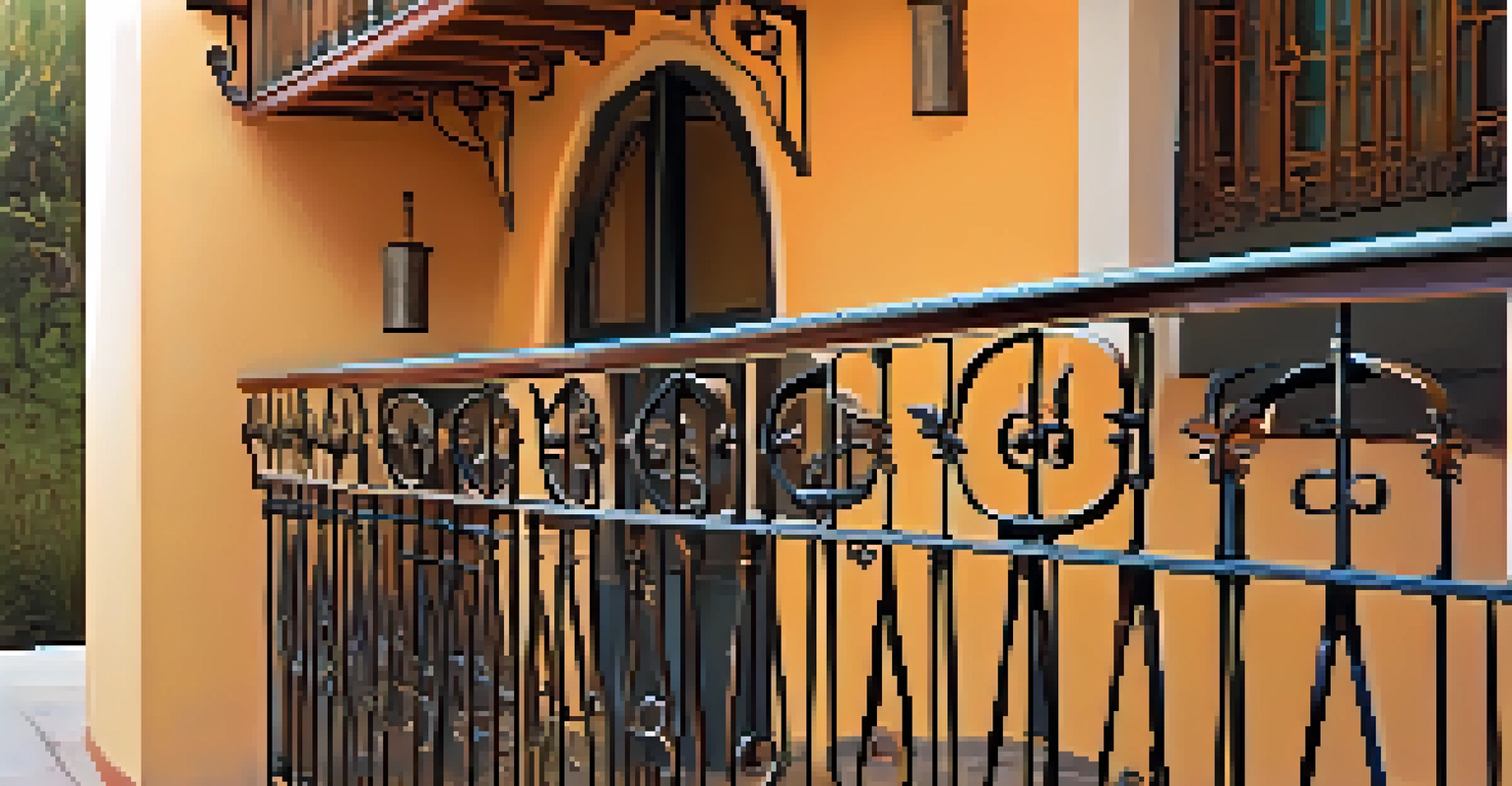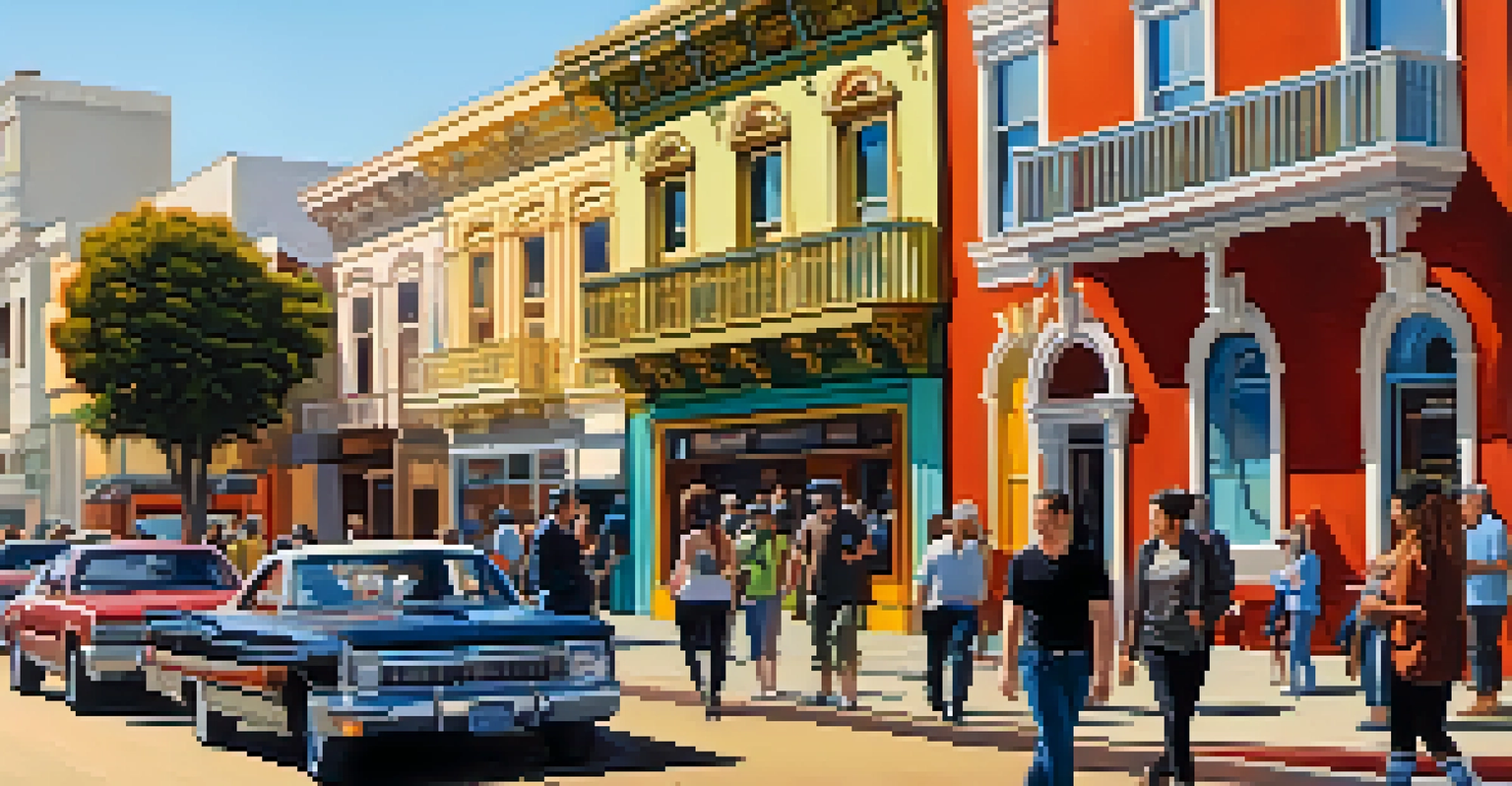The Influence of Mission Revival Style in San Francisco

Understanding Mission Revival Style and Its Origins
Mission Revival Style is an architectural movement that emerged in the late 19th century, inspired by the Spanish missions in California. This style is characterized by its use of arched doorways, red-tiled roofs, and stucco finishes, creating a distinct Mediterranean vibe. The movement aimed to evoke a sense of nostalgia for California's colonial past, appealing to both residents and tourists alike.
Architecture is the thoughtful making of space.
In San Francisco, this style became particularly popular as the city sought to establish its identity following the Gold Rush era. The architecture reflected a blend of romanticized history and burgeoning urban development, showcasing the unique cultural fusion of the time. Many buildings in the Mission District feature these elements, creating a visual narrative of the city’s evolution.
The revival of interest in Spanish-style architecture coincided with the Arts and Crafts movement, which emphasized handcrafted quality and a connection to nature. This synergy contributed to the Mission Revival Style's charm, making it a beloved choice for many building projects in San Francisco. As a result, you’ll find vibrant examples of this style scattered throughout the city.
Key Features of Mission Revival Architecture
One of the most recognizable features of Mission Revival architecture is the use of curved parapets and bell towers. These elements draw inspiration from the old missions, creating a striking silhouette against the city's skyline. The roofs, often covered in red clay tiles, provide a warm contrast to the white or muted-colored stucco walls, enhancing the overall aesthetic appeal.

Another hallmark of this style is the extensive use of arches, both in windows and doorways. These arches not only add to the beauty of the buildings but also allow for better airflow and natural light, an important consideration in the sunny Californian climate. This architectural choice creates a welcoming atmosphere that invites people to explore further.
Mission Revival's Historical Roots
Emerging in the late 19th century, Mission Revival architecture reflects California's colonial past and the city's cultural evolution following the Gold Rush.
Additionally, intricate tile work and wrought iron details are common in Mission Revival buildings, adding a decorative touch that honors the craftsmanship of earlier eras. These design elements create a sense of place, making each structure feel like a part of San Francisco's rich history. Together, these features contribute to the unique character of the city.
Historical Context of Mission Revival in San Francisco
The rise of Mission Revival architecture in San Francisco can be traced back to the early 1900s, a time when the city was undergoing significant transformation. Following the devastating 1906 earthquake, many buildings were reconstructed, leading to a revival of various architectural styles, including the Mission Revival. This rebuilding effort allowed for the style to flourish, providing a sense of continuity in the face of destruction.
The details are not the details. They make the design.
As the city's population grew, so did the need for more housing and commercial space. Architects began to embrace the Mission Revival style, seeing it as a way to incorporate cultural heritage into modern designs. This movement contributed to the development of neighborhoods that reflected a blend of old-world charm and contemporary needs, creating a unique urban landscape.
Key buildings from this period, such as the Mission San Francisco de Asís, also known as Mission Dolores, became focal points for the Mission Revival style. These structures served as reminders of the city's past while also functioning as community hubs. Today, they continue to attract visitors, showcasing the enduring legacy of Mission Revival architecture.
The Role of Mission Revival in Urban Development
Mission Revival architecture played a crucial role in shaping San Francisco's urban landscape. As new neighborhoods developed, the style was often chosen for residential and commercial buildings, creating a cohesive aesthetic throughout the city. This approach not only beautified the environment but also fostered a sense of identity among residents.
The city government recognized the appeal of the Mission Revival style, incorporating it into various public works projects. For instance, the construction of community centers and schools in this style helped to establish a visual consistency that residents could rally around. This contributed to a stronger sense of community and pride in the local environment.
Key Features of Mission Revival
Characterized by arched doorways, red-tiled roofs, and stucco finishes, Mission Revival buildings create a distinctive Mediterranean aesthetic that enhances San Francisco's urban landscape.
Moreover, the popularity of Mission Revival architecture has had lasting effects on real estate trends in San Francisco. Homes and buildings featuring these design elements often command higher prices due to their historical significance and aesthetic appeal. This trend underscores the importance of architectural heritage in the city’s ongoing development.
Mission Revival Style in Modern San Francisco
Today, the influence of Mission Revival architecture can still be seen throughout San Francisco, blending seamlessly with modern designs. Many new constructions pay homage to this style, incorporating its key features while adapting them to contemporary needs. This fusion reflects the city’s ongoing commitment to preserving its architectural heritage while embracing innovation.
In neighborhoods like the Mission District, you'll find a vibrant mix of historic and modern buildings that tell the story of San Francisco's evolution. The preservation of Mission Revival structures alongside new developments creates a dynamic urban landscape that continues to attract residents and tourists. It’s a testament to the city’s ability to honor its past while looking toward the future.
Moreover, local organizations and preservation societies actively work to maintain and restore Mission Revival buildings. Their efforts ensure that these architectural gems remain integral to San Francisco's identity, fostering appreciation for the city’s history. This dedication to preserving the past is a crucial part of what makes San Francisco unique.
Cultural Significance of Mission Revival Architecture
The cultural significance of Mission Revival architecture extends beyond mere aesthetics; it speaks to the diverse heritage of San Francisco. This style reflects the city's unique blend of influences, from Spanish colonial roots to modern American life. It serves as a reminder of the historical narratives that shaped the region and its inhabitants.
In many ways, Mission Revival buildings embody the spirit of the communities they serve. These structures are not just places to live or work; they are spaces that foster social interaction and cultural exchange. The architecture encourages a sense of belonging, inviting people from various backgrounds to come together and celebrate their shared environment.
Preservation Efforts in San Francisco
Local advocates prioritize preserving Mission Revival architecture to maintain the city's historical narrative while balancing modern development.
Furthermore, the enduring popularity of Mission Revival architecture has inspired artists, writers, and musicians who find inspiration in its beauty and history. This artistic connection adds another layer to the style's cultural significance, illustrating how architecture can influence and enrich the creative spirit of a city.
Preserving the Legacy of Mission Revival Style
As San Francisco continues to evolve, the preservation of Mission Revival architecture remains a priority for many local advocates. Efforts to protect these structures from demolition or neglect are essential to maintaining the city's historical narrative. Preservationists work tirelessly to raise awareness about the importance of these buildings, emphasizing their role in the community.
Community engagement is vital in this preservation effort. Residents and local organizations often come together to discuss the significance of Mission Revival buildings and their impact on neighborhood identity. This collective action fosters pride in local heritage and encourages more people to take an active role in safeguarding these architectural treasures.

Looking ahead, the challenge lies in balancing development with preservation. As new projects emerge, it’s crucial to find ways to integrate Mission Revival elements into modern designs. By doing so, San Francisco can continue to tell its story through architecture, ensuring that the legacy of Mission Revival style endures for future generations.